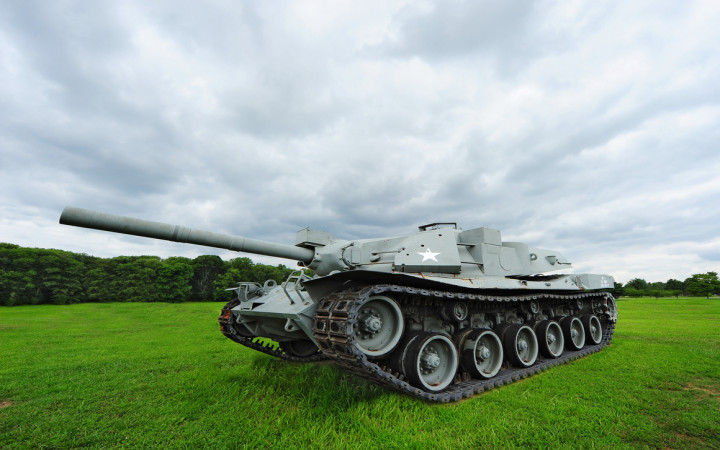Tanks are armored fighting vehicles made for fighting wars in rough terrain. They provide heavy firepower in the form of large guns and mounted machine guns.
Joseph Hawker developed the idea for the modern tank. In 1872, he obtained a patent for “propelling a road locomotive employing endless flat linked pitch or other chains passing round the rims of the main moving wheels."
It was not until World War I, however, that tanks were first produced and used in war. To avoid fierce face-to-face combat, the British first used tanks at the Battle of the Somme in 1916.
It was around this time that tanks also got their name. Because they wanted to surprise German forces, the Allied forces built the first tanks in total secrecy.
They told the workers building the vehicles that they would be used to transport water. When it was time to ship the completed machines, the crates were marked “tank" (as in “water tank"), and the name has been used ever since.
One of the key benefits of tanks is their mobility. Tanks are able to move over and around obstacles, as well as most types of rough terrain, due to their continuous tracks.
Continuous tracks — also called "caterpillar tracks" — move tanks by a system of metal plates that are linked together and driven by wheels. Compared to the rubber tires on a regular car or truck, continuous tracks have a much larger surface area.
The larger surface area of continuous tracks spreads a tank's heavy weight over much more ground area. This allows a tank to travel on many types of rough or soft terrain without sinking or becoming stuck.
The treads of the metal plates that make up caterpillar tracks are very tough. They provide good traction and are much more reliable than rubber tires would be. Can you imagine how easy it would be to disable a tank if it had rubber tires?
Since tanks are very heavy due to their armor and big guns, you might think that they can only move very slowly. Believe it or not, tanks can actually move at about 25 miles per hour on flat terrain and up to 45 miles per hour on roads! Some tanks have even gone as fast as 60 to 70 miles per hour for short periods of time.
Tanks aren't really built for speed, though. Driving tanks at high speeds often leads to mechanical problems and breakdowns.
Tanks perform better at slow speeds over short distances. That is why they usually must be transported to where they are needed on huge airplanes, trains, or special trucks.




